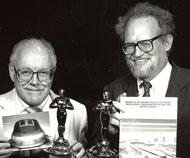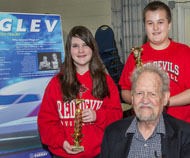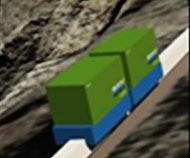
Welcome Aboard!
The America Project
Maglev Energy Storage

The 21st Century Electric Travel Machine
Advanced 2nd Generation Superconducting Maglev solutions for 21st Century surface transportation and beyond. All Aboard on the magnetic wave!! MagneticGlideTM is smooth, quiet, fast, efficient and providing low cost for passenger and freight transportation systems.
Click here for more information
Electrical power systems typically experience large swings in power demand, with relatively low usage during the night and high usage in the daytime. Even during the daytime period, power demand varies widely, with major peaks during the morning and late afternoon.
The Maglev Power System, or MAPS, is designed to store large amounts of energy from solar or wind sources and return this power to the smart grid during those periods when wind or solar are in low output modes.
To learn more about our solutions in superconducting maglev energy storage as an adjunct to solar and wind generation systems.
Click here for more information
Our Highways to the Future
MagneticGlideTM travel is fast and efficient. There is no friction except for air. Superconducting magnets support your vehicle as it glides on a super stable 6 inch thick magnetic carpet at 300 miles per hour. There are no delays due to weather or congestion. You are always on time.
Click here for more information
How Civilization Can Create a Sustainable Energy Supply for the Earth
Dr. James Powell, the co-inventor of Superconducting Maglev propulsion technology featured on this page, participated in a podcast discussion with Dr. Franklin Chang Diaz, one of the preeminent authorities on space propulsion and NASA Hall of Fame astronaut.
In this excerpt from the podcast produced by Gabriel Ignetti (Gabe) and co-host Isaac Arthur, Powell describes the use of Maglev technology to build a electrically powered space launch system that can reliably place payload in orbit at less than 1% of the launch cost per pound of a conventional chemical rocket system.
This very low launch cost of this system makes it possible to carry out many important missions in space: orbiting satellites for communications, GPS, weather observation, asteroid defense, etc.
Dr. Powell and colleagues have also pursued the question, will humans give up fossil fuels in several books, “Silent Earth”, “Spaceship Earth”, and “StarTram, The New Race to Space” and 100’s of scientific papers. In this excerpt, Powell describes how StarTram can place a new system of satellites in orbit to beam electric energy to Earth that would be cheap enough to replace fossil fuels, creating a new economic index for the continued progress of a growing human population.
Those interested in what many believe is the most underreported and grand challenge of our time will find Dr. Powell’s discussion both fascinating and enlightening.


Students Win Top Honors at Brookhaven Lab's Maglev Contest
UPTON, NY — Robert Moses Middle School students won eight of the 21 trophies awarded at the annual Middle School Maglev Contest held at the U.S. Department of Energy's Brookhaven National Laboratory on March 20.
See articles and photos: www.bnl.gov/newsroom/news.php?a=11516
Spaceship Earth - describes three technologies for helping humanity meet the challenge of global warming:
• Beamed space solar power using StarTram to place solar satellites in geosynchronous orbit
• Ocean Thermal Energy to desalinate billions of gallons of water to supply water scarce populations and farms at very low cost
• Technology for large-scale removal and burying billions of tonnes of carbon dioxide from the atmosphere
Powell and Danby's Grand Idea: 50 Years of Maglev History
Wednesday, March 16, 2016 | Presented by Jesse Powell | 49:21
To celebrate the 50th anniversary of the first published paper on magnetic levitation (Maglev) vehicles—authored by now-retired Brookhaven Lab researchers James Powell and Gordon Danby—James Powell's son Jesse presents this lecture on maglev's past, present, and potential for the future.
Click here for video presentation




